
- 1. Immediate Actions to Take When Your Roof Starts Leaking
- 2. How to Prevent Further Damage During a Storm
- 3. Temporary Repairs for a Leaky Roof
- 4. Long-Term Solutions and When to Call a Professional
1. Immediate Actions to Take When Your Roof Starts Leaking
When you notice that your roof is leaking during a storm, it's essential to act quickly. Water coming through your roof can cause significant damage to your property, including your ceilings, walls, and belongings. Here's what you should do immediately:
- Stay calm and assess the situation: Quickly identify the location of the leak. Check for visible signs of water coming in, such as drips or water stains.
- Protect your belongings: Move any valuable items out of the way to prevent water damage. Use buckets, towels, or plastic sheets to catch and contain the water.
- Turn off electricity if needed: If water is coming close to electrical outlets, switches, or appliances, turn off the power supply to avoid electrical hazards.
- Make temporary adjustments: Use plastic sheeting, tarps, or any waterproof material to cover the affected area to prevent further water infiltration.
2. How to Prevent Further Damage During a Storm
While waiting for professional help or the storm to pass, it's crucial to minimize further damage to your home. Here are some steps to take:
- Use buckets or containers: Place containers under the leak to catch the water and prevent it from spreading. Ensure they are big enough to handle the volume of water.
- Dry the affected area: Use towels, mops, or a wet-dry vacuum to remove excess water. This will help reduce the risk of water spreading and causing additional damage to walls and flooring.
- Ensure proper ventilation: Open windows or use fans to circulate air in the area to help with drying and to prevent mold growth.
3. Temporary Repairs for a Leaky Roof
While waiting for a roofer or the storm to pass, there are several temporary solutions you can try to minimize the leak's impact:
- Use roofing tar or sealant: If the leak is coming from a small crack or hole, applying roofing tar or a high-quality sealant over the affected area can help stop the water from flowing in.
- Cover the roof with a tarp: If you can safely get outside, use a tarp to cover the leaky section of the roof. Secure the tarp with ropes or weights to keep it in place during the storm.
- Place a plywood board: If the roof is severely damaged, placing a piece of plywood over the leaky area will add a layer of protection until the roof can be properly repaired.
4. Long-Term Solutions and When to Call a Professional
While temporary repairs can prevent further water damage, it’s essential to address the issue properly as soon as possible. Long-term solutions include:
- Professional roof inspection: A qualified roofing contractor can identify the cause of the leak and recommend a permanent fix, whether it's patching up a small hole or replacing a section of the roof.
- Roof replacement: If your roof is old or severely damaged, it might be time for a complete replacement. A professional roofer can help assess whether this is the best option.
- Regular roof maintenance: After the immediate repairs are made, establish a regular roof maintenance schedule to ensure your roof remains in good condition for years to come.
Don't hesitate to call a professional roofing company like Pro Found Roofing for an assessment and comprehensive repairs. Timely intervention can save you money and protect your home from further damage.
Remember, dealing with a leaky roof during a storm can be stressful, but with the right steps, you can prevent the situation from worsening. Take immediate action, make temporary repairs if possible, and contact a roofing professional for a long-term solution.







 Pinnacle Home Improvements4.0 (38 reviews)
Pinnacle Home Improvements4.0 (38 reviews)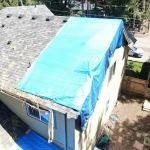 Armadas Exterior LLC4.0 (154 reviews)
Armadas Exterior LLC4.0 (154 reviews)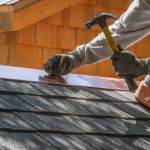 Scarlet Exteriors LLC4.0 (38 reviews)
Scarlet Exteriors LLC4.0 (38 reviews) Performance Roofing System4.0 (2 reviews)
Performance Roofing System4.0 (2 reviews) T Bare Roofing4.0 (49 reviews)
T Bare Roofing4.0 (49 reviews)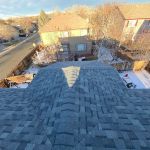 Iron Bull Roofing5.0 (13 reviews)
Iron Bull Roofing5.0 (13 reviews)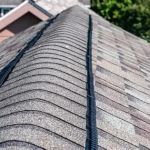 How to Install Ridge Shingles and Caps for a Finished and Watertight Roof
How to Install Ridge Shingles and Caps for a Finished and Watertight Roof Roofing Warranties Explained: What’s Covered and What’s Not
Roofing Warranties Explained: What’s Covered and What’s Not Top-Rated Roofing Brands You Can Trust in 2026
Top-Rated Roofing Brands You Can Trust in 2026 The Impact of Shade from Solar Panels on Moss Growth Underneath Them
The Impact of Shade from Solar Panels on Moss Growth Underneath Them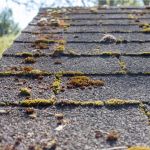 The Difference Between Algae and Moss on Your Roof and How to Treat Each
The Difference Between Algae and Moss on Your Roof and How to Treat Each How to Find a Reliable Roofing Contractor Near You – Expert Tips for Hiring
How to Find a Reliable Roofing Contractor Near You – Expert Tips for Hiring